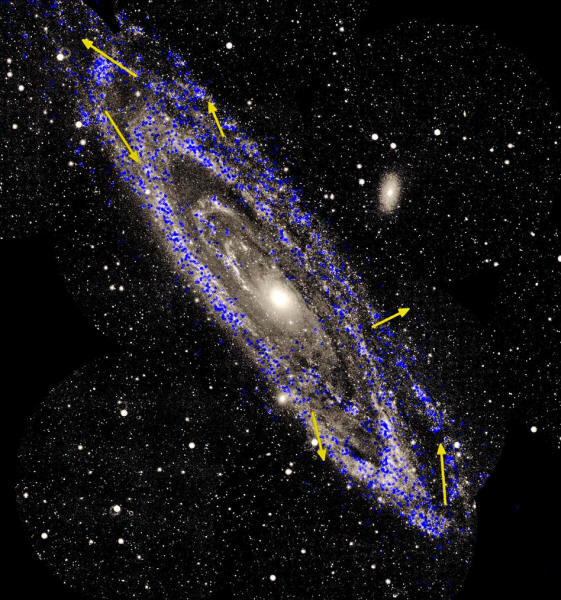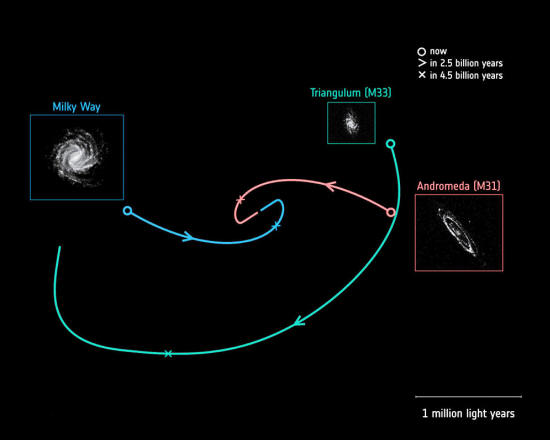|
February 08, 2019 from Space Website
with measurements of the motions of stars within the galaxy.
This
spiral galaxy is the nearest large neighbor of our Milky Way. NASA/Galex (background image)
R. van
der Marel, M. Fardal, J. Sahlmann (STScI)
Some prominent previous estimates had predicted the crash would happen significantly sooner, in about 3.9 billion years.
Gaia launched in December of 2013 to help researchers create the best 3D map of the Milky Way ever constructed.
The spacecraft has been precisely monitoring the positions and movements of huge numbers of stars and other cosmic objects; the mission team aims to track more than 1 billion stars by the time Gaia shuts its sharp eyes for good.
In the new study, the researchers tracked a number of stars in our galaxy, These neighbor galaxies are within 2.5 million to 3 million light-years of the Milky Way and may be interacting with each other, study team members said.
The future orbital trajectories of three spiral galaxies: our Milky Way (blue); Andromeda, also known as M31 (red); and Triangulum, also known as M33 (green). The Milky Way and Andromeda will collide about 4.5 billion years from now, a new study based on observations
by Europe's Gaia spacecraft suggests. R. van der Marel (STScI). Images: ESA (Milky Way), ESA/Gaia/DPAC (M31, M33)
Using the Gaia-derived
findings and analyses of archival information, the study team mapped
out how M31 and M33 have moved through space in the past and where
they'll likely go over the next few billion years.
(Because the distances between stars are so great, the odds that our own solar system will be disrupted by the merger are very low. But the crash will definitely liven up the night sky for any creatures that are around on Earth 4.5 billion years from now.)
The new study (First
Gaia Dynamics of the Andromeda System - DR2 Proper Motions, Orbits,
and Rotation of M31 and M33) was published this month in
The Astrophysical Journal.
|



